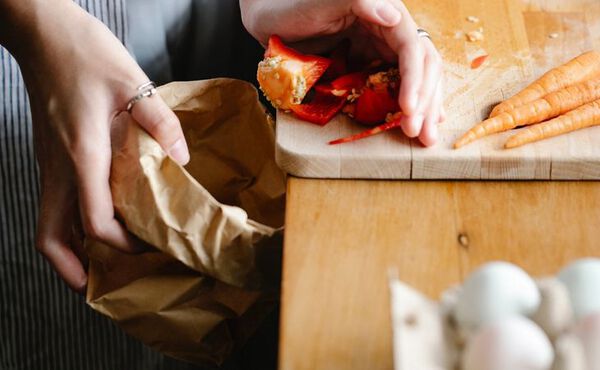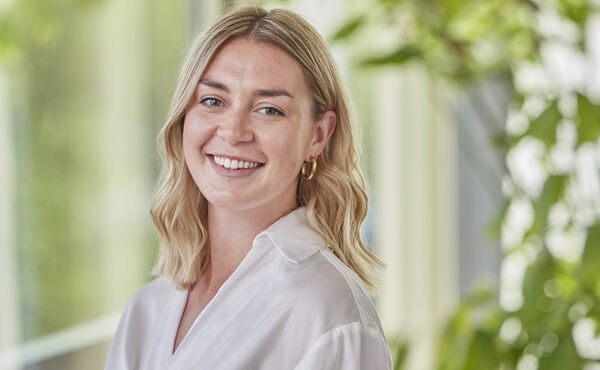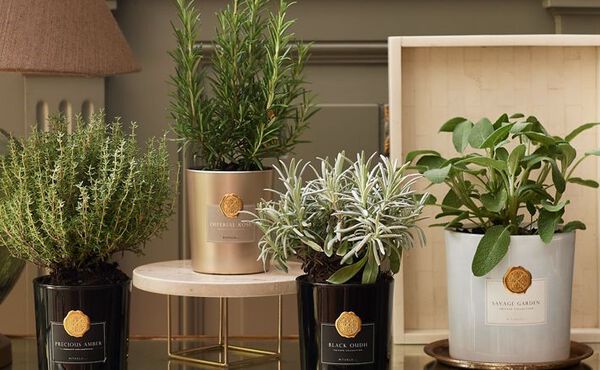Ready for 2024 to be the year you make smart, sustainable decisions? Here’s our tips on how to do just that.
Amidst the cold and dark weather, the new year always holds a promise of new positive habits. Maybe it wasn’t your big New Year's resolution, but I'm sure a lot of you have thought of how you can try to help the planet this year.
Whilst it can often seem like our small personal actions can’t do much, every little can help in the fight to turn back the climate change clock. Need convincing? According to a report by the European Commission in May last year, the EU produced more solar-powered electricity than fossil fuels for the first time ever. Last year we also saw a 2.9% decrease in Green House Gas (GHG) emissions in the first quarter compared to 2022 and since 1990, we’ve cut emissions by 32.5%. This is great, but we have to keep the ball rolling. Considering the goal is to cut emissions buy at least 55% by 2030 – we still have a long way to go. So, how can we all help to give these savings a second wind in 2024? Here’s some tips...

Be smart online
This may surprise you, (since it doesn’t seem that long ago since we were being told to ditch paper in the workspace and go digital wherever possible) but according to Clean Fox, a single stored email emits 10g of CO2 per year (that’s the equivalent of a plastic bag). A report by the Financial Times even said that if every British person sent one fewer polite ‘thank you’ email, 16,433 tonnes of carbon would be saved a year (the equivalent of tens of thousands of flights to Europe). So here comes tip number one – clean up your inbox and have a think about whether each email really needs to be sent. And, even if you’ve paid for unlimited data on your phone, try not to adopt the mindset ‘I’ve got to make the most of my money’. According to a report, streaming over 4G costs four times more energy than using Wi-Fi, so connect whenever possible.
Let no carrot go to waste
According to a new study, one-third of the total GHG emissions are a product of the global food system. And, half of this, is simply down to food waste. “How many times have you left veg in your fridge drawer for so long that it goes soft?” asks Gousto chef, Sophie Nahmad. You might think this is the end of the road for these limp-looking veg – but it’s not quite! Here are Sophie’s top tips for bringing them back to life.
“You can bring carrots back to life by cutting a bit off the bottom and placing them upright in a glass of cold water until firmed up.” You can also do the same with greens like broccoli and lettuce. If you’ve ever wished you could eat every single morsel of parmesan attached to the ring, it turns out you absolutely can. “Next time you whip up a batch of soup, layer a parmesan rind on top and watch it melt. This works especially well with French onion soup,” Sophie advises.
Another scenario: you’ve done a big food shop and realised you may have over-catered for yourself this week – this realisation moment is your time to act. “Don’t leave the surplus to go off!” says Sophie “You can actually store some vegetables and herbs in the freezer, ready for the next time you need them. To blanch vegetables, just simmer them in boiling water for a few minutes, and then plunge them into cold water straight away. Once cooled, get rid of any excess water, and pop into a freezer bag for safe keeping. This works perfectly for green veg like beans, asparagus and broccoli.”
“Sturdier herbs like oregano and rosemary can be frozen whole too. Just chop them up, arrange them in a single layer on a baking tray and pop them in the freezer – they’ll last up to six months once frozen. My handy trick for herbs is to chop them up and freeze them into ice cube trays with a little cooking oil or melted butter. Then, when it comes to cooking, you can add the cubes directly to the pan.”
Buy less, buy better
You’ve probably heard this before but it should be the golden rule of your year. “In this day and age, it’s very easy to get caught up with all the micro trends that go viral via social media,” says sustainability influencer Monika Poppy. “I’ve learnt that I save both money and impulse shop less when I curate my own style. Take some time to think about two different words that define your core style and base your wardrobe and shopping on them. This way, when you see a micro trend, you can easily assess if it fits in with your aesthetic and if you’ll get a lot of use out of it.” This doesn’t just count for fashion but for every aspect of retail. From a new sofa to a new frying pan, look for something durable and timeless (and better yet – where possible - second-hand!)
Reuse, reuse, reuse
Use each other for this one. From jeans that don’t fit to treats you won’t eat - there are lots of apps out there that can help you give away unwanted items. Why not make a WhatsApp group with your neighbours? If you're going on holiday and won’t get around to eating all those eggs, you can donate them to someone else.
This year, everything you think about throwing out, think a little longer. Put a sticky note above your bin with the words ‘could you reuse?’ Here are a few ideas to get the juices flowing:
Cereal bags – You could reuse these in place of clingfilm or a sandwich bag or, cut a hole in the bottom and use it as a piping bag for icing.
Cotton T-shirt – Cut it up into tiny little squares and reuse these in place of cotton pads for removing makeup. You can even wash and constantly reuse them!
Old socks – Cut both the edges off and sew one side. Fill with rice and then sew the other side (should be a square shape). You can then put this in the microwave and use it as a hand warmer in the winter.
Empty candle – Clean the wax out and reuse as a plant pot or a storage vessel for makeup brushes, utensils or stationery.
For more ideas on how to reuse your preloved Rituals products, read here: From plant pots to photo boxes: clever ways to upcycle your Rituals products.




.jpg?sw=600&sh=370&sm=fit&cx=0&cy=0&cw=600&ch=370&sfrm=jpg)

